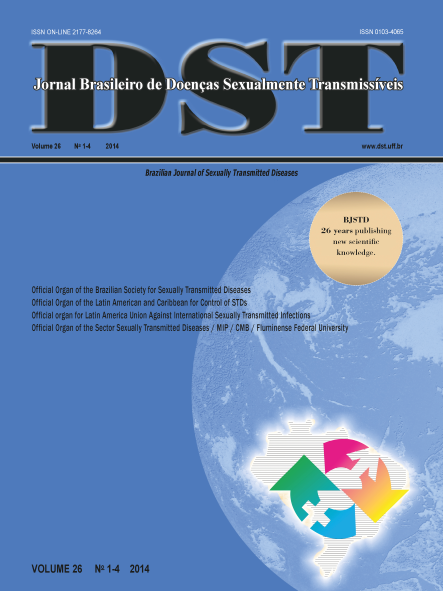Infecção por papilomavírus humano em múltiplos sítios
Palavras-chave:
infecções por papilomavírus, PCR, ânusResumo
Introdução: Muitos estudos sobre a história natural do papilomavírus humano (HPV) têm focado nas infecções cervicais, mas pouco tem se falado sobre infecções anais em pacientes assintomáticos. Assim, a história natural do HPV ainda está em construção e os mecanismos de manutenção dele no organismo hospedeiro são pouco compreendidos. Entendemos que a detecção do vírus em sítios extragenitais poderá ajudar na compreensão da cadeia de infecçãodisseminação- reinfecção pelo HPV no trato genital humano. Além disso, é evidente a importância de um rastreio adequado do vírus diante de diagnósticos clínicos, principalmente no período inicial da lesão, provendo, assim, um melhor prognóstico. Nossos resultados apontaram uma prevalência da infecção por HPV em lesões genitais de 87% (80/92) e nas amostras anais tal prevalência foi de 47,8% (44/92). Ressaltamos que nossa prevalência foi alta, mas estudamos indivíduos com lesões genitais clinicamente detectadas, aumentando, assim, o risco de infecção em outros sítios e confirmando a ocorrência da presença do HPV no hospedeiro, provavelmente decorrente de autoinoculação. Apesar da diferença entre o número de indivíduos dos sexos feminino e masculino em nosso estudo, não encontramos diferenças estatísticas relacionadas à presença do HPV em lesões genitais (H: 85,1% e M: 92%; p>0.05), corroborando que não há diferenças entre o tropismo por gênero referente às infecções genitais. Entretanto, no caso das infecções anais, a porcentagem foi estatisticamente diferente: 68% de HPV anal em mulheres e 40,3% em homens (p=0,038). Estes resultados apontam que a aquisição da infecção anal em mulheres, apesar de assintomática, é mais frequente do que em homens, sugerindo que esta mucosa possa ser infectada por autoinoculação e funcionar como um reservatório feminino, o que eventualmente poderá resultar em lesões. Tais discrepâncias da prevalência entre homens e mulheres poderiam ser explicadas pelo comportamento sexual, por efeitos hormonais e por diferenças entre sítios. Nosso estudo se trata de um levantamento preliminar da infecção por HPV em múltiplos sítios.












